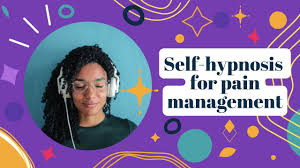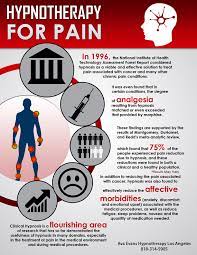The Power of Self Hypnosis for Pain Relief
Pain is a universal experience that can greatly impact our quality of life. Whether it’s chronic pain, acute pain, or discomfort from an injury, finding effective ways to manage and alleviate pain is essential. One technique that has gained recognition for its ability to help with pain relief is self-hypnosis.
Self-hypnosis is a practice that involves inducing a state of deep relaxation and heightened focus through guided imagery and suggestions. By accessing the subconscious mind, individuals can learn to control their perception of pain and promote feelings of comfort and well-being.
How Does Self Hypnosis Work for Pain Relief?
During self-hypnosis sessions, individuals are guided to enter a state of deep relaxation where their conscious mind becomes less active, allowing the subconscious mind to be more receptive to positive suggestions. Through visualization techniques and affirmations, individuals can reframe their perception of pain, reduce stress and anxiety levels, and promote feelings of calmness and control.
The Benefits of Self Hypnosis for Pain Relief
Self-hypnosis for pain relief offers a range of benefits, including:
- Reduced perception of pain intensity
- Increased sense of control over one’s body
- Improved overall well-being and quality of life
- Decreased reliance on medication for pain management
- Promotion of relaxation and stress reduction
Getting Started with Self Hypnosis
If you’re interested in exploring self-hypnosis for pain relief, consider the following steps:
- Find a quiet and comfortable space where you can relax without distractions.
- Select a specific goal or intention for your self-hypnosis session (e.g., reducing back pain, managing headaches).
- Use calming music or guided meditation recordings to help induce a state of relaxation.
- Practice deep breathing exercises to promote relaxation and focus.
- Create positive affirmations or visualizations related to your goal (e.g., “I am free from pain,” “My body is healing”).
- Repeat these affirmations or visualizations while in a relaxed state, allowing yourself to fully immerse in the experience.
- Practice self-hypnosis regularly to strengthen your ability to manage pain effectively.
- How long does it take for self-hypnosis to work?
- How do you cope with constant pain?
- Does self-hypnosis work for pain?
- Can I do hypnotherapy on yourself?
- What to do when chronic pain is unbearable?
- What are three things hypnosis Cannot do?
- How to do hypnosis on myself?
Conclusion
In conclusion, self-hypnosis is a valuable tool that individuals can use to manage and alleviate various types of pain. By tapping into the power of the subconscious mind through relaxation techniques and positive suggestions, individuals can enhance their overall well-being and quality of life. If you’re seeking alternative methods for pain relief, consider incorporating self-hypnosis into your wellness routine.
Mastering Self-Hypnosis for Pain Management: Answers to 7 Key Questions
How long does it take for self-hypnosis to work?
The time it takes for self-hypnosis to work in alleviating pain can vary from person to person. Some individuals may experience immediate relief after a single session, while others may require consistent practice over a period of time to notice significant improvements. Factors such as the individual’s level of receptiveness, the complexity of the pain condition, and the consistency of practicing self-hypnosis techniques can all influence the speed at which results are achieved. It is important to approach self-hypnosis with patience and commitment, allowing oneself the time needed to fully embrace and benefit from this powerful tool for pain relief.
How do you cope with constant pain?
Coping with constant pain can be a challenging and exhausting experience for many individuals. One effective approach that has gained recognition is self-hypnosis for pain relief. By learning to induce a state of deep relaxation and focus through guided imagery and positive suggestions, individuals can cultivate a sense of control over their perception of pain. Through regular practice of self-hypnosis techniques, individuals can enhance their ability to manage chronic pain, promote feelings of comfort and well-being, and improve their overall quality of life. If you are struggling with constant pain, exploring self-hypnosis as a complementary tool for pain management may offer valuable support in your journey towards relief and wellness.
Does self-hypnosis work for pain?
Self-hypnosis has been increasingly recognized for its effectiveness in managing and alleviating pain. Numerous studies and anecdotal evidence suggest that self-hypnosis can indeed work for pain relief. By inducing a state of deep relaxation, accessing the subconscious mind, and utilizing visualization techniques and positive affirmations, individuals can positively influence their perception of pain, reduce stress levels, and promote feelings of well-being. While results may vary depending on individual factors and the nature of the pain being experienced, many people have reported significant improvements in pain management through regular practice of self-hypnosis techniques. It is important to approach self-hypnosis with an open mind and consistency to fully experience its potential benefits for pain relief.
Can I do hypnotherapy on yourself?
When it comes to self-hypnosis for pain relief, a common question that arises is, “Can I do hypnotherapy on myself?” The answer is yes, self-hypnosis is a powerful technique that individuals can learn and practice on their own. By following guided scripts, visualization exercises, and relaxation techniques, individuals can induce a hypnotic state and effectively manage pain perception. With dedication and practice, self-hypnosis can be a valuable tool for promoting relaxation, reducing stress, and enhancing overall well-being.
What to do when chronic pain is unbearable?
When chronic pain becomes unbearable, exploring self-hypnosis for pain relief can offer a valuable alternative approach. In such challenging times, individuals can benefit from practicing self-hypnosis techniques to help manage and alleviate the intensity of their pain. By tapping into the power of the subconscious mind through guided imagery, relaxation, and positive suggestions, individuals experiencing chronic pain can find a sense of control, comfort, and relief. It is essential to seek guidance from a qualified hypnotherapist or healthcare professional to learn effective self-hypnosis strategies tailored to one’s specific needs and circumstances when facing unbearable chronic pain.
What are three things hypnosis Cannot do?
When considering self-hypnosis for pain relief, it’s important to understand that while hypnosis can be a powerful tool, there are limitations to its capabilities. Three things that hypnosis cannot do include altering a person’s fundamental personality traits or beliefs, erasing memories permanently, and providing instant or miraculous solutions to complex physical or psychological issues. It is essential to approach hypnosis with realistic expectations and an understanding of its boundaries in order to fully benefit from its potential in managing pain and promoting overall well-being.
How to do hypnosis on myself?
To perform self-hypnosis for pain relief, you can start by finding a quiet and comfortable space where you won’t be disturbed. Begin by focusing on your breathing to induce a state of relaxation. Next, set a specific intention or goal for your session, such as alleviating pain in a particular area of your body. Use visualization techniques and positive affirmations to guide yourself into a deeper state of relaxation and focus on promoting feelings of comfort and well-being. With practice and consistency, self-hypnosis can become a valuable tool in managing pain and enhancing your overall quality of life.




